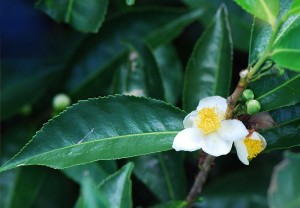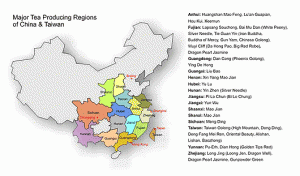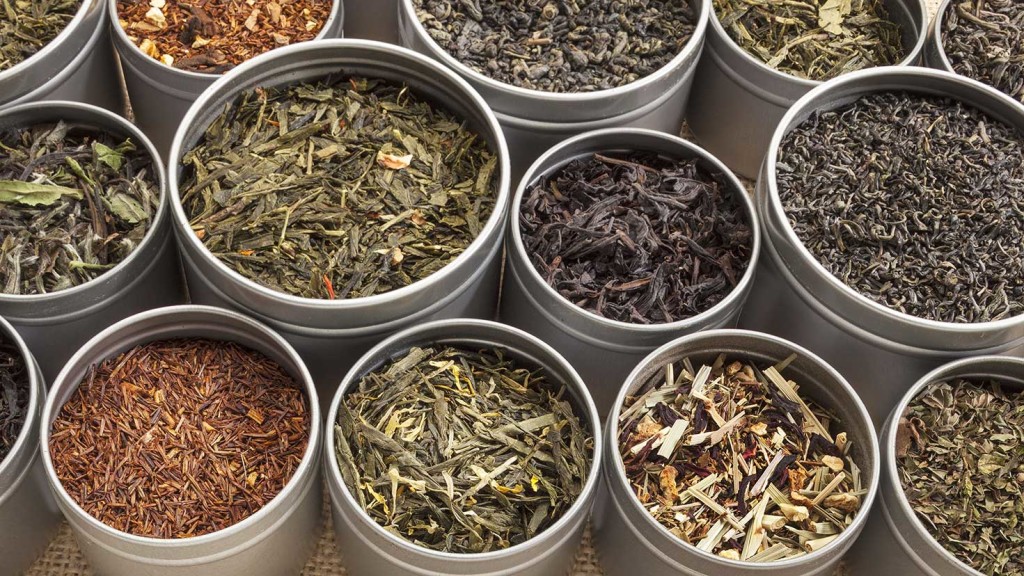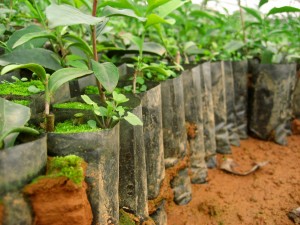A short film on the flavor and natural beauty behind the tea.
Terroir +
Terroir +Tea Components
Group definition:
Terroir is more than just a marketing ploy, it encompasses all of the beautiful aspects of a unique food. Terroir includes the factors that influence the unique taste of place. These include culture, climate, and geology.
After tasting many different teas with many different backgrounds of soil, climate, terrain, production, culture, history and industry I have found that terroir has an incredible impact on tea. For example, the Su Ji Chun was cultivated in Nantou, Taiwan from a strain of tieGuanYin and thrives in the mid elevation. Along with being lightly oxidized it gives the tea a floral rosey or jasmine aroma with a very light tan coloration but when taking the first sip the tea it gives you a nutty almond flavor with the hint of floral jasmine as you swallow. I believe these flavors, colors and aromas all have been affected by the terroir of this tea, shaping its flavor and presentation.
Field Study
Field Study Components:
Favorite Insights on tea-by Kjerstyn
| The ingredient Camellia sinensis is found in tea plants and melatonin | Raj Vable; Young Mountain Tea |
| Green tea and Black tea come from the same plant. The only difference is how it is processed. | Abir Biwas |
| The first flush of Darjeeling Tea is the most expensive tea produced. | Raj Vable; Young Mountain Tea |
The Taste of Tea- Maurissa Young (an original poem)
Someone once gave me
a seed, tiny and small
told me “this is where plants come from”
and I was perplexed.
Some one once gave me
a cup of water, cold and fresh
and told me “drink it, you’ll be fine”
and I was refreshed
Now I take the tea
a perfect blend of water and plant
I say “I’ll be fine
even if I don’t know how”
A cup of tea is a cup of nature
Water, plants
soil, flowers,
sky, air
A cup of tea is nature
Nature at it’s finest
Oolong tea shows it more
than anything.
You can taste the rock,
The minerals in the rock
and minerals that created the dirt.
You can taste the dirt,
the vitality in the dirt,
nothing more than life
You can taste the life in the plants
the perfume of the flowers
the green of the plants
You can taste the green
Turning to brown
as it turns into a dry tea
You can taste the dry tea
turning back to green
as the moisture comes back
Tea doesn’t just hold the taste of life
Tea holds the taste of the circle of life
and the idea of resurrection
The water revitalized the tea;
giving me it’s very life and reassurance
so I can be one with the Earth
Tasting the leaves of the Earth-by Kjerstyn
| Tea has always been a big part of my life: from tea before bed with my mom, to tea parties with my friends, to a cup a day to keep my going. Throughout my life I have tried many types of tea, however, nothing compares to the taste of the second flush darjeeling tea we tried with Young Mountain Tea. The second flush Darjeeling tea hit my tongue like a ton of brick with its complex flavor. As it went down my throat the flavor softened into a light almost flowery taste. The Darjeeling tea had a full body feel. It felt as if I could almost chew the tea. |
Business of Tea- Assigned to Maurissa, Revised by Kjerstyn
Tea was first consumed, as a beverage, in the Han Dynasty more than 2,000 years ago. Before this, tea was used as a medicine. Tea was transported from China to Europe by The Dutch East India company. This company also brought tea to India, which nowadays is where most people think tea was first grown. Once, tea was in Europe it caught like wildfire. All a crossed Europe and the United Kingdom tea became a must have. The British wanted more tea, having already colonized India, naturally they started tea farming in Indian. India is now one of the largest tea producers in the world.
Each tea grown in India has a very distinct flavor based on what region it is grown in. The main regions are Assam, Darjeeling, Nilgiri, and South India.Tea grown in each region are marketed as such. Tea is handpicked and handled with care throughout the plantations. Tea is an all year crop. Different times of the year bring different qualities of tea, these are called flushes. The first flush is the most valued, and with that the most expensive tea produced.
https://www.google.com/url?sa=i&rct=j&q=&esrc=s&source=images&cd=&cad=rja&uact=8&ved=0ahUKEwjz5LKu-4_LAhVV-mMKHTueC3gQjB0IBg&url=http%3A%2F%2Fwww.thechineseteashop.com%2Fgrowing-regions.html&psig=AFQjCNF48RKNfnkIFmwJWvTCINcQgmbLkQ&ust=1456387645206345
Natural History of Tea
Camellia sinensis is a woody, evergreen shrub that produces white or yellow flowers. It is a perennial and can live up to 100 years. It is part of the Theacea family, which is home to all plant species used for tea. The family is known for its 5 sepals and petals. For thousands of years, this plant has been cultivated for the use of making a medicinal and social drink. The shrub to a tree size at 17 meters, but it is usually trimmed to be 1-2 meters for ease of tea harvest. The top two leaves and bud are hand harvested for high quality tea. Faster harvested known as ‘course plucking’ involved harvesting the top three leaves and bud. These buds are picked every one to two weeks. In recent years, some areas such as Japan have adopted mechanical harvesting for teabag production.
Camellia sinensis is native to Southeast Asia, East Asia, and areas in India. Though today, they can be found cultivated around the world in about 30 countries. C. sinensis prefers wet, humid climates with at least 50 inches of rainfall a year. Regions that have monsoon seasons are most common tea growing areas because of the favorable conditions left for the hearty shrubs. These plants grow well on high slopes, allowing adequate drainage. In areas such as China, low rainfall in the winter allows for strong roots that are much less susceptible root rot than other, more tropical growing areas. This break in water income allows the plant to go into dormancy and produce fresh, soft buds with the first rainfalls in spring. Thriving at elevations above 9,500 feet, the highlands in China and India are idea growing environments. C. sinensis prefers slightly acidic soils, ideal levels are from 4-5.6 pH. This can only be true with solid water holding capacity as well. 
All types of tea are harvested at the same time, the processing is what changes the flavor of eat tea. Camellia sinensis is used to make green, black, yellow, and white teas. Green, black and oolong teas are highest in production, and have created the highest demand in the tea growing industry. Green tea is produced by omitting the oxidation process other tea varieties go through. Oxidation is highly promoted in black tea production, allowing almost all green leaf polyphenols are oxidized. Oolong tea is a variety less intensely oxidized. Less than 2% of all tea produced is oolong, while green tea only accounts for 20% of overall production. Green tea is consumed primarily in China, Japan, and a few countries in North Africa and the Middle East.
The most common propagation methods today involve single nod cuttings. This conventional propagation is slow, and over time slowly shortens the plant’s genetic base. Traditionally, seed planting has been most common. Seeds germinate in the sun and once seedlings reach a strong stage they are transplanted to pots. These seedlings will not be ready to plant in the field until they are two to three years old. Recently, a lot of research has been put into new, more effective methods. In vitro is the hot new propagation method out today that would in theory be less expensive. Mircopropagation requires less labor and has a much higher success rate. Though, the current conventional cuttings are less expensive because they can be completed with limited resources and in remote areas. Conventional one-node plant cultivation is much faster than traditional seed planting, only taking one year before reaching size to be planted in field. These are also much more uniform than seed planting. To create successful cuttings, one must provide the perfect acidity. A pH of 7 would lead to slowed growth and a high probability of death within the first year in the field. Cultivators have been adding sulpur or aluminum sulphate to ensure the high acidity. Elemental sulphor that is added to soil must be broken down by microorganisms. If this process is not perfectly timed it can result in damaged roots from toxic forms of sulpur not yet broken down. Recent studies have shown that aluminum sulphate, even in high concentrations, does not negatively effect plant growth.
Currently, arthropods are the biggest insect pest risk to Camellia sinensis around the world. Over one thousand species of arthropods have been reported to cause some form of damage to monocultured plantations. These insects feed on the roots, leaves, shoots, flowers, seeds, and stems of C. sinensis, leaving the tea plant helpless in an invasion. Pesticide use has been yet to be effect in killing the pathogen as well as continuing to produce a clean tasting tea beverage. Blight is also a highly damaging pathogen that is common on Camellia sinensis grown in high humidity areas. Blights are housed in areas with low air flow. Once the plants have been infected, it is very difficult to stop blight from spreading incredibly quickly among a plantation. Scale,aphids, and mites are all common pathogens that feed on the leaves of c. sinensis. Most of theses populations cause damage that is nearly impossible to reverse. Some aphid populations can only be removed by hand, creating an unrealistic IPM for large scale farms.
Written by: Nikki




